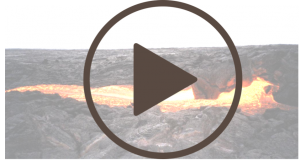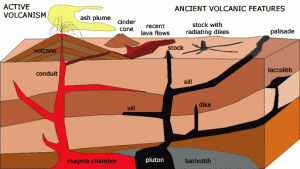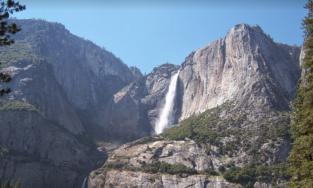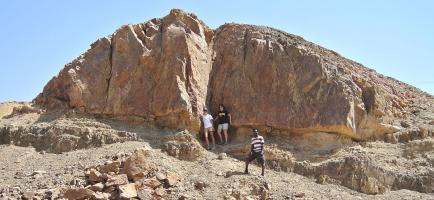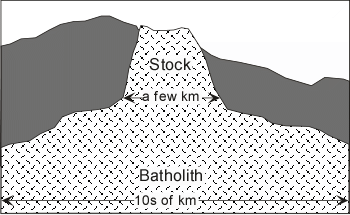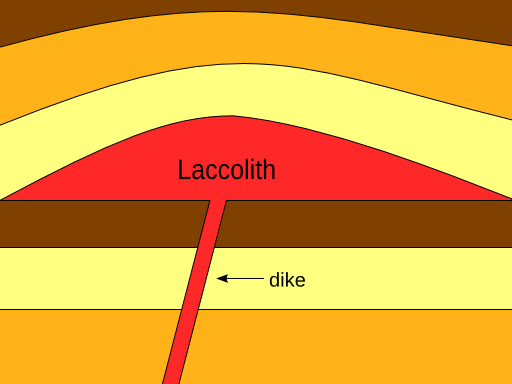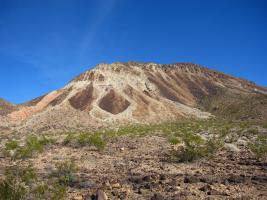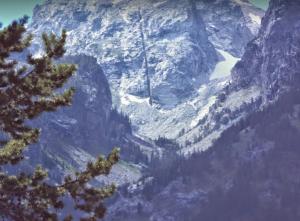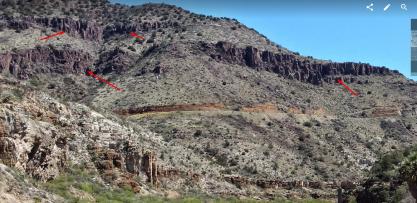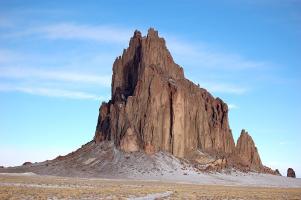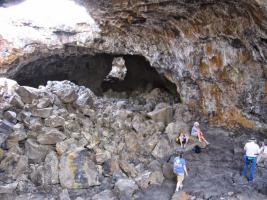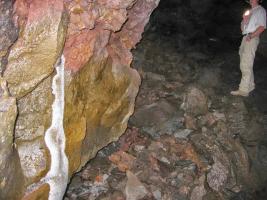Evidence Of Past Volcanoes
Daily Dose of Destruction
You can purchase the Evidence of Extinct Volcanoes at Teachers Pay Teachers for 0.50 Cents.
Volcanoes that have gone extinct, leave many clues to their destructive power and existence behind. In this section, we are going to focus on the evidence that volcanoes have left behind. Below is a diagram of some of these remnants.
Batholiths are some of the largest intrusive igneous rock bodies. Batholiths are formed from a magma chamber that cooled off. Yosemite National Park shows the weathering of a gigantic granite batholith. Payson, AZ is also built on a batholith. Exposed batholiths will have relatively large crystals due to the amount of time it took for the magma to cool.
Stocks are similar to batholiths. They are plutonic igneous rocks that are much smaller than a batholith and are less than 20 km in diameter.
A laccolith is a lens-shaped igneous remnant of magma that has intruded itself between two rock strata causing uplift of the ground. This uplift is in the shape of a dome.
Dikes are intrusive igneous rocks that cut across rock layers. Below are some images of dikes found in the Grand Tetons National Park. In the first picture, you can see that the intrusive dike is sticking out of the mountains due to differential weathering because the intrusion is a harder rock than the surrounding mountainside.
Sills are intrusive igneous rocks that run between and parallel to rock layers. The first image is of a sill found in the Salt River Canyon in Arizona.
If you ever see a large standing igneous object out in the middle of nowhere, you might be looking at a volcanic neck or a plug. The volcanic neck happens when a volcano gets plugged up. The lava cools into the throat of the volcano and then over time, the volcano erodes, leaving the neck or plug exposed. The first picture below is Shiprock on the Navajo Nation in New Mexico. The second set of images is of an island near Scotland that used to be a volcano. It has since eroded leaving the plug behind.
There is a bunch of evidence of previous lava flows. Much of the flat land in the White Mountains AZ is built on lava flows. Below are images of lava flows that I have visited. The first one is the edge of a lava flow in Idaho Twin Falls. The waterfall that you see is coming out of the igneous rock in many cases. This lava flow is one of the reasons Idaho can grow such large potatoes. There is a thick layer of soil sitting on top of a large lava flow. Rain and irrigation systems water the potato plant, but then the water continues to pass through the rock below allowing for great drainage due to the rock's permeability. Potatoes don't thrive well in super wet soil. The second picture is evidence of a pahoehoe lava flow. You can see that it cooled off in the formation of its honey-like movement. The third picture is from the Craters of the Moon National Park where there is a huge volcanic field. This is one large lava flow with a few volcanoes popping out of it.
Lava tubes and caves are created when the outer edge of a lava flow hardens and creates sort of an oven for the rest of the lava to remain superheated. This superheated lava continues to flow. When it empties, it leaves the cooled off outer shell. Some lava tubes can be miles long. Many times, over the years, the lava tube ceiling collapses allowing entrance points. Below are three images of lava caves and tubes found at Craters of the Moon National Park. The third image shows ice. Many times these caves stay very cold all year long.
Some vocab worth knowing:
- Tephra: Any fragmental material ejected out of a volcano like ash, lava bombs, and cinders.
- Tuff: Tephra that has become solid rock.
- Ash: Glassy fragments and pulverized material that is ejected out of a volcano.
Super large and explosive volcanoes erupt millions and millions of tons of ash, tuff, and tephra into the atmosphere and the surrounding area. What goes up, must come down, so when the tephra gets deposited, it too can eventually solidify into solid rock, becoming tuff and providing scientists with evidence of past volcanic activity. Chihuahua National Park near Tucson Arizona is a great example of a past volcanic deposit. The columns you see in the images below are the remnants of a massive volcanic explosion that deposited hundreds of feet worth of tephra. That tephra cooled off turning into rock. Many years of volcanic eruptions left layer after layer of tephra. Over time cracks developed in the rock, allowing the processes of weathering and erosion to transform these layers of tuff into the formations you see today.










